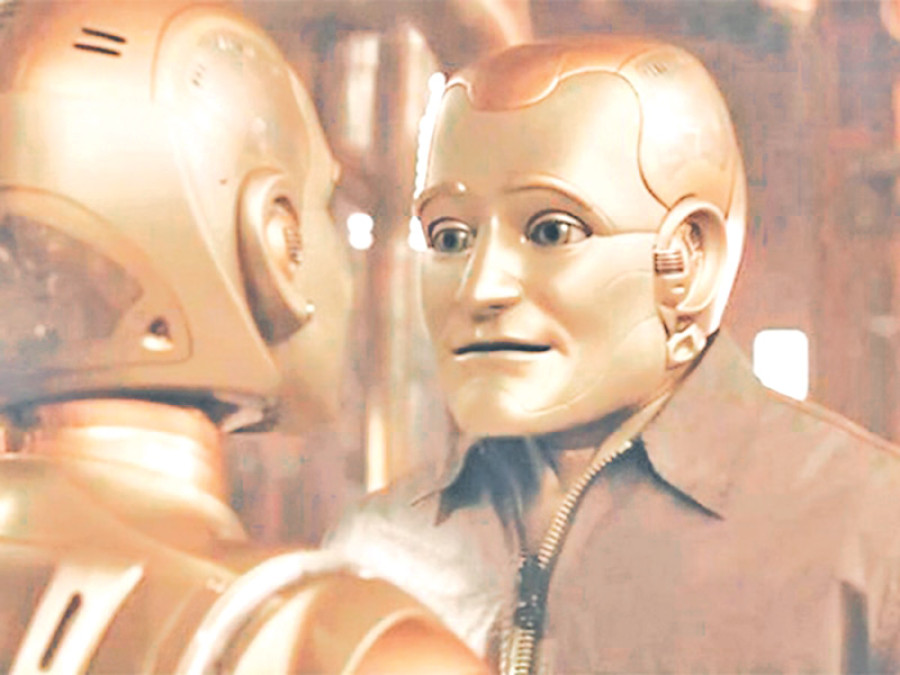Opinion
Judgment day
Is it just me or do you also feel that Kathmandu is getting increasingly congested with both people and automobiles? Recently, during a lecture at the University of Cambridge, world renowned physicist Stephen Hawking warned that humanity probably has about 1,000 years left on earth,
Is it just me or do you also feel that Kathmandu is getting increasingly congested with both people and automobiles? Recently, during a lecture at the University of Cambridge, world renowned physicist Stephen Hawking warned that humanity probably has about 1,000 years left on earth, and that the only way it could be saved from extinction is by setting up colonies elsewhere in the solar system. Similarly, world famous naturalist and television presenter Sir David Attenborough also publicly announced that humanity is a plague on earth. “Either we limit our population growth or the natural world will do it for us, and the natural world is doing it for us right now,” he said. Other naturalists have also warned of similar possibilities if the human population continues to grow at the current rate.
And there is a good reason to be worried because numerous studies have suggested that humans are starting to cause mass extinction comparable to the one that destroyed the dinosaurs. In short, humanity’s future looks bleak. So, let us begin where everything ends. Interestingly, mythologies and religions across the planet point to the fact that a messiah will descend from heaven to rescue humanity if and when there is a crisis of apocalyptic proportions. So, witnessing the series of horrible events unfolding around the world, including climate change and overpopulation, it feels as though the arrival is near.
Religions and mythologies
In Judaism, the Messiah means a saviour of the Jews who will come to unify the tribes of Israel. Similarly, Christians believe that the Christ, the Son of God, is the Messiah who will fulfil the rest of the messianic prophecies at the time of the Second Coming. Buddhists have a similar foretelling. In Buddhism, Maitreya is a Bodhisattva who will supposedly appear on earth in the future to achieve complete enlightenment to teach the Dharma. The Buddhist scriptures also say that Maitreya will be a successor to Gautama Buddha. As the prophecy goes, Maitreya will arrive at a time when Dharma will have been forgotten by many in the world. And, by the Dharma, we mean the eternal law of the cosmos inherent in the very nature of things, and not necessarily dogmatic religions.
According to the Hindu scriptures, Kalki, the 10th and final avatar of Lord Vishnu will come upon us at the end of Kali Yuga for two reasons. First, the arrival of Kalki signals the end of Kali Yuga, an age of degradation of the earth realm when true spirituality is at an all-time low. Second, Kalki will manifest himself as per the yearnings of the righteous truth seekers and spiritual aspirants across the planet. So, in a sense, Kalki’s global mission will be to re-establish spiritual wisdom, true sacred traditions and authentic scriptures to uplift humankind.
Since we are living in the 21st century, I thought it would be interesting to explore the Messiah in the context of the New Digital Age. The Messiah will come as a cyborg (short for cybernetic organism). A cyborg is an an organism with a restored function or enhanced abilities that have resulted from integration of some artificial component or technology.
The term cyborg was coined by Manfred Clynes and Nathan Kline in 1960 in an article titled ‘Cyborgs and Space’. They define a cyborg to be ‘an exogenously extended organisational complex functioning as an integrated homeostatic system’. In ‘A Cyborg Manifesto’, Donna Haraway explains, “A cyborg exists when two kinds of boundaries are simultaneously problematic: (a) that between animals (or other organisms) and humans and (b) that between self-controlled, self-governing machines and organisms, especially humans.”
Verge of annihilation
Many fear that the rise of cyborgs will mean the end of humans. I trust the ending will constitute a kind of liberation with interesting possibilities because technology will not remain a mere prosthetic aid, but something that will describe and construct the very positions that come to be occupied by a cyborg. For instance, Clynes and Kline argue that altering human bodily functions is more of a pragmatic approach to meeting the needs of extraterrestrial environments than creating an earthly environment in space.
Talking about messiahs, Moses led the Israelites from Egypt across the Red Sea and to Canaan, the Promised Land. The 40-year journey could not have been possible if Jews had not strictly followed the Ten Comman-dments that God sent to Moses. In a similar manner, a machine messiah is sure to rise and lead the people to the promised land outside earth. This has to happen because human beings are on the verge of destroying this planet. Pollution kills more people every year than wars, auto accidents and homicides combined. About 21,000 people die every day of hunger or hunger-related causes. Nasa scientists have warned about the sea level rising at least 10 feet.
And to end, when Michael Foucault wrote, “As the archaeology of our thought easily shows, man is an invention of recent date. And one, perhaps nearing its end.” Was he signalling the end of humankind and the start of something new? If he was, then can we assume that Kalki will come to lead humanity to the promise land somewhere in the universe? Make no mistake, the machine will be the Messiah.
Shah was a fellow at the Centre for Electronic Governance under the United Nations University—International Institute for Software Technology, Macau




 8.12°C Kathmandu
8.12°C Kathmandu










